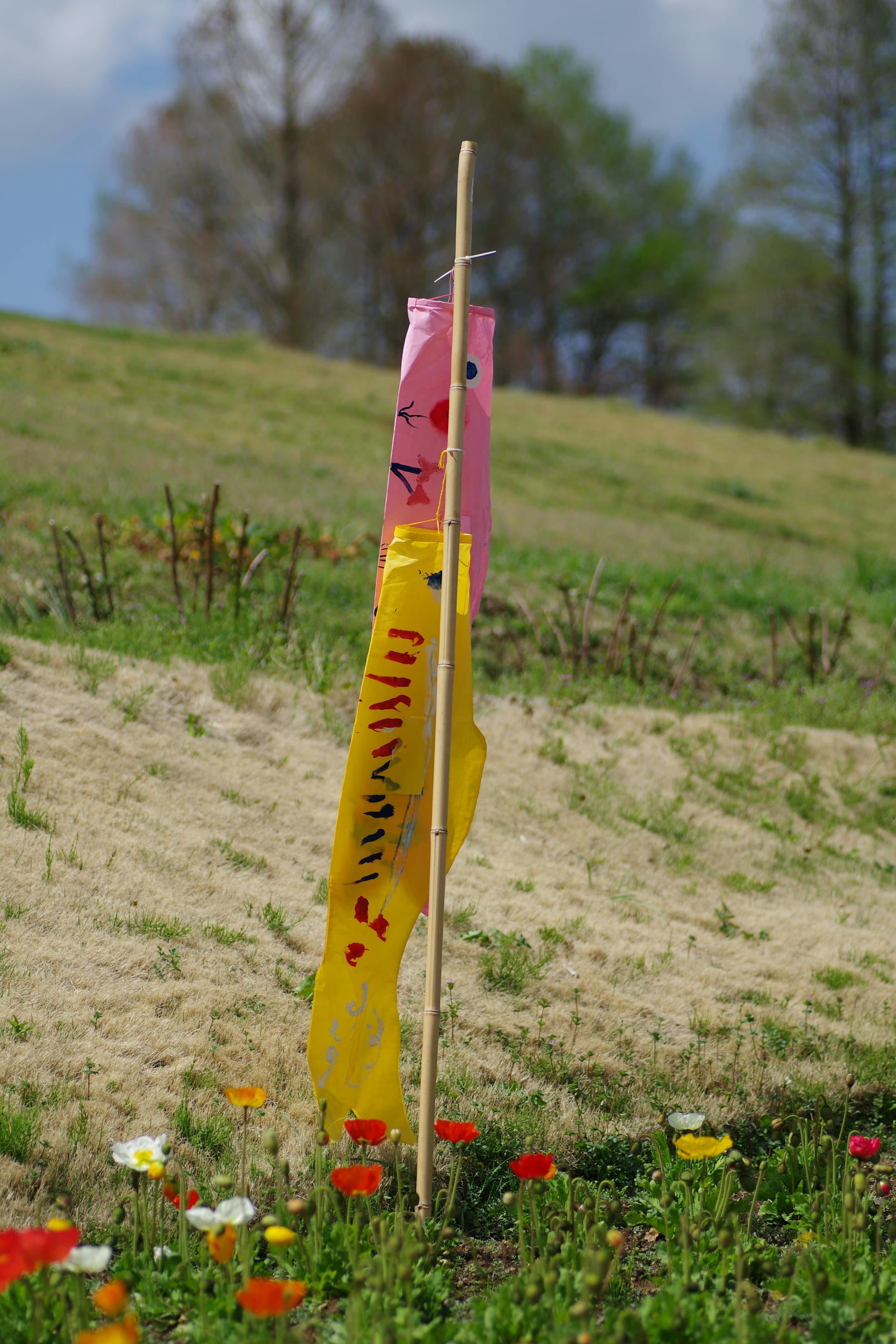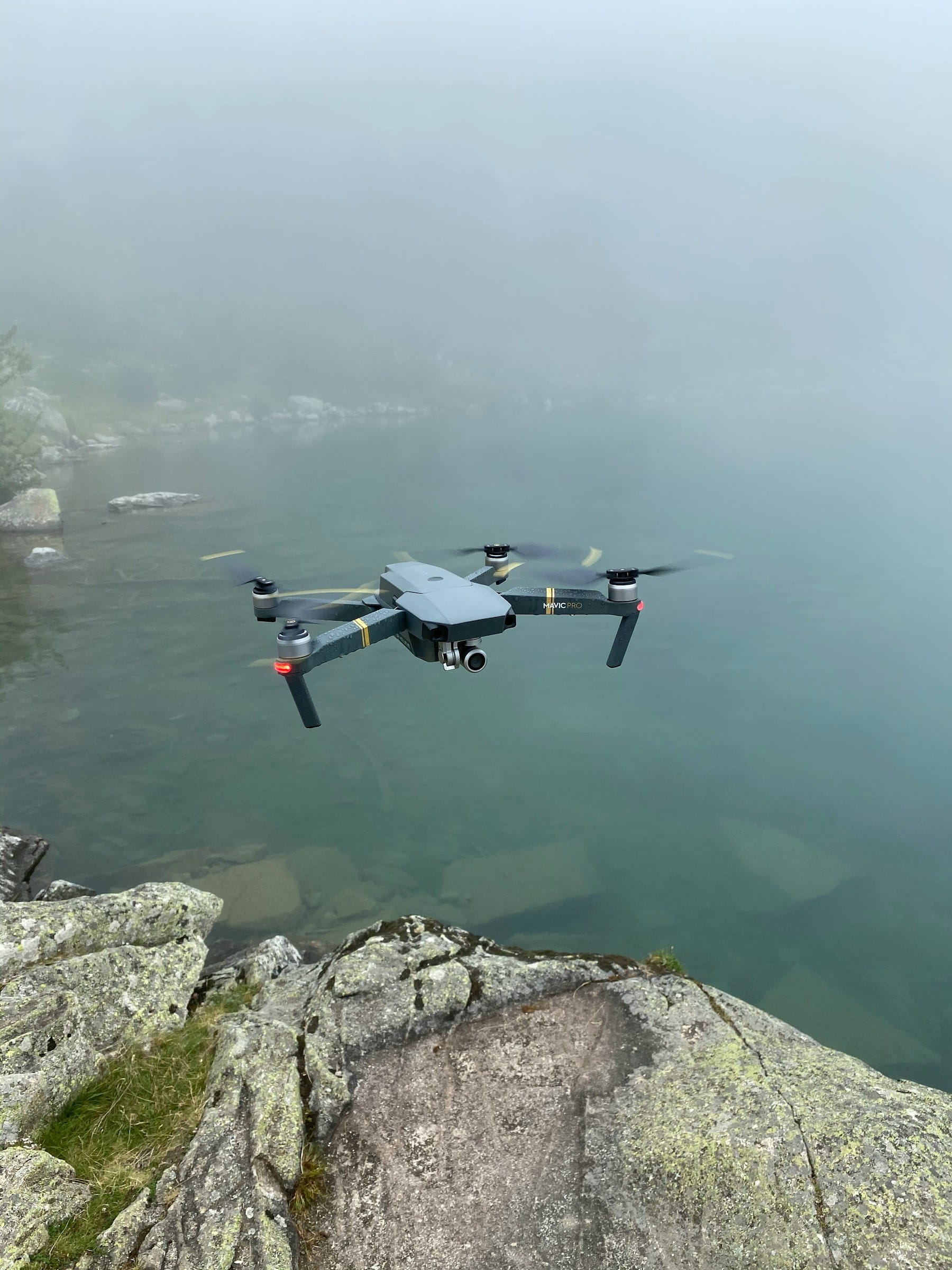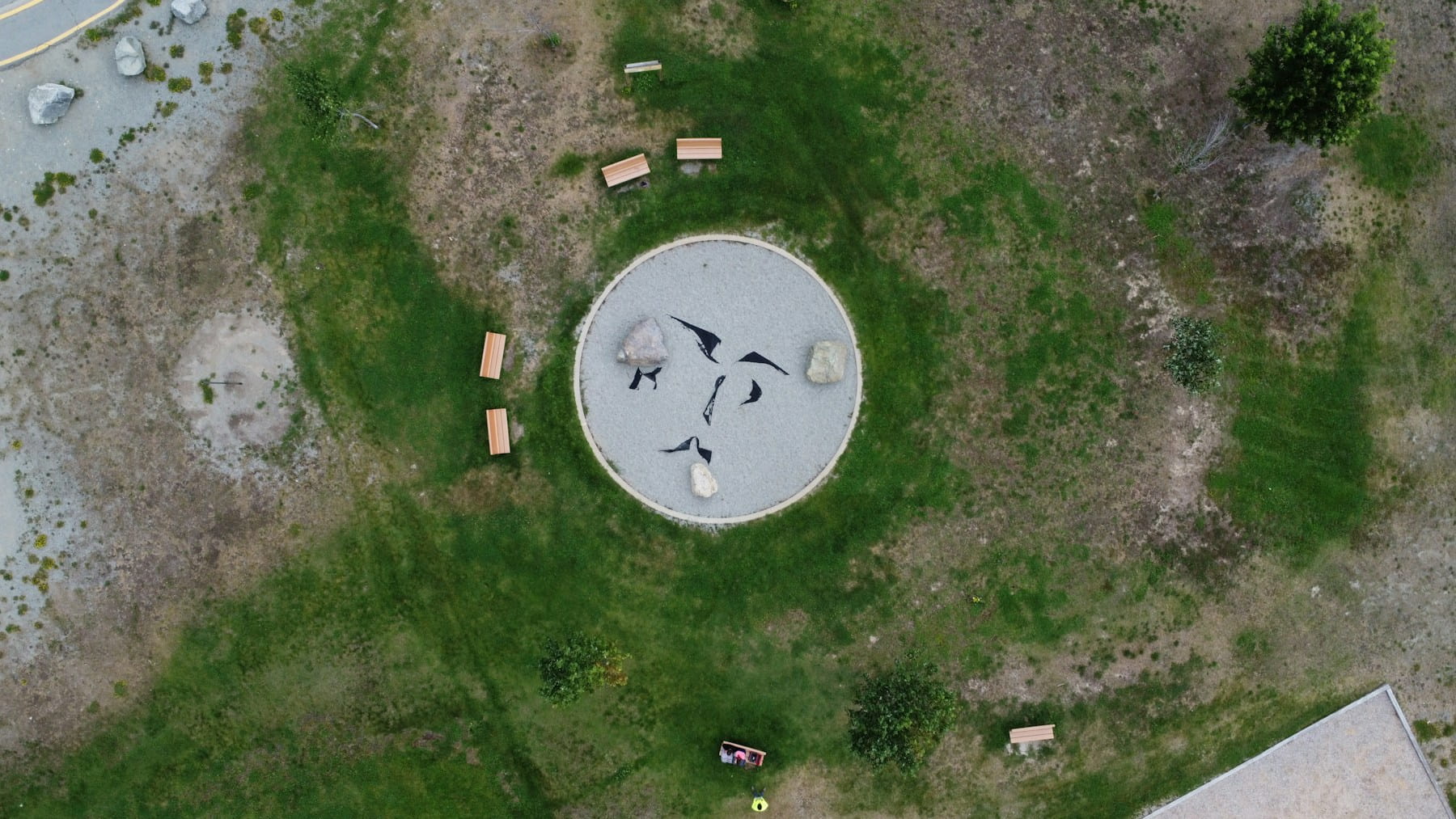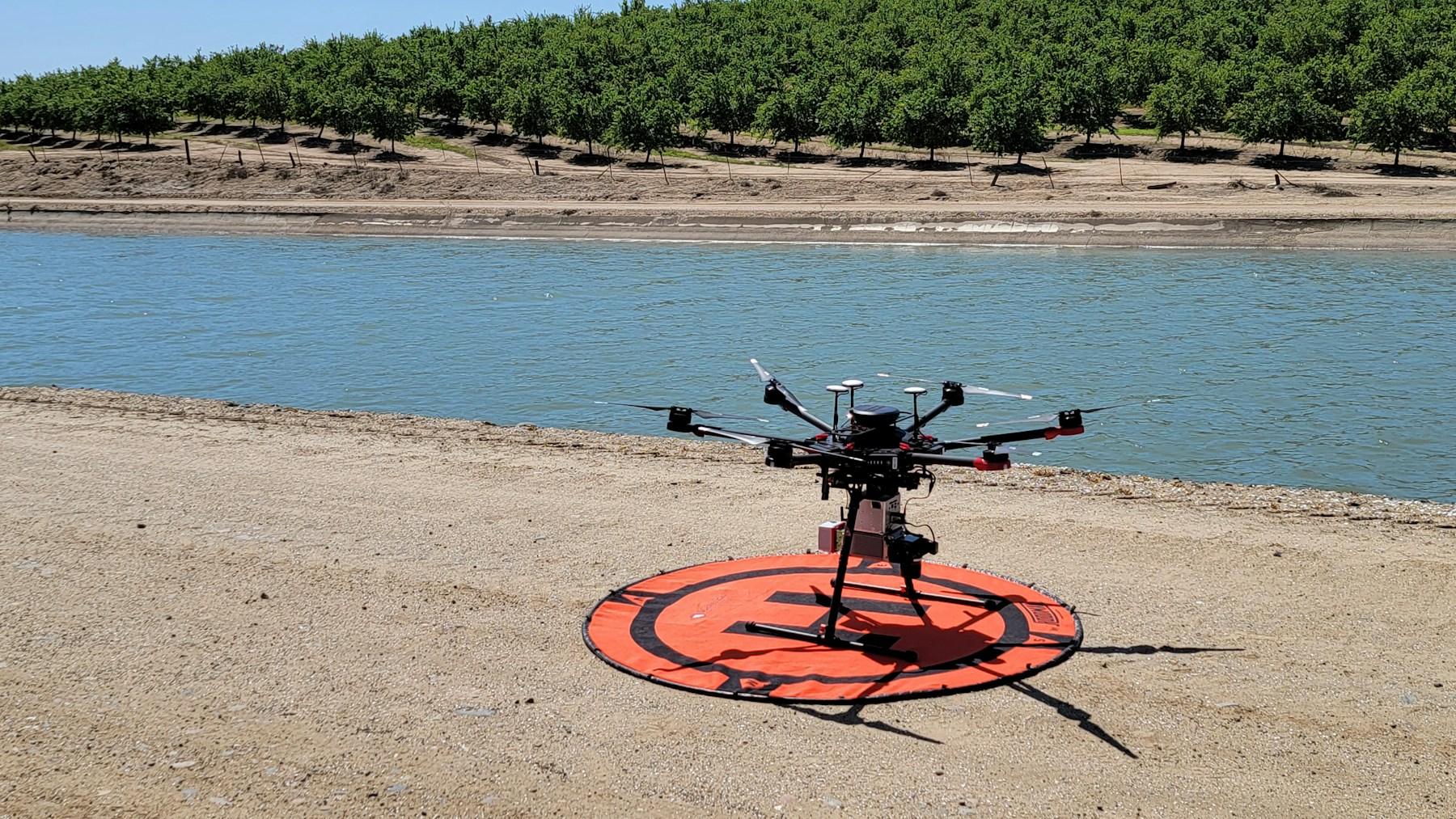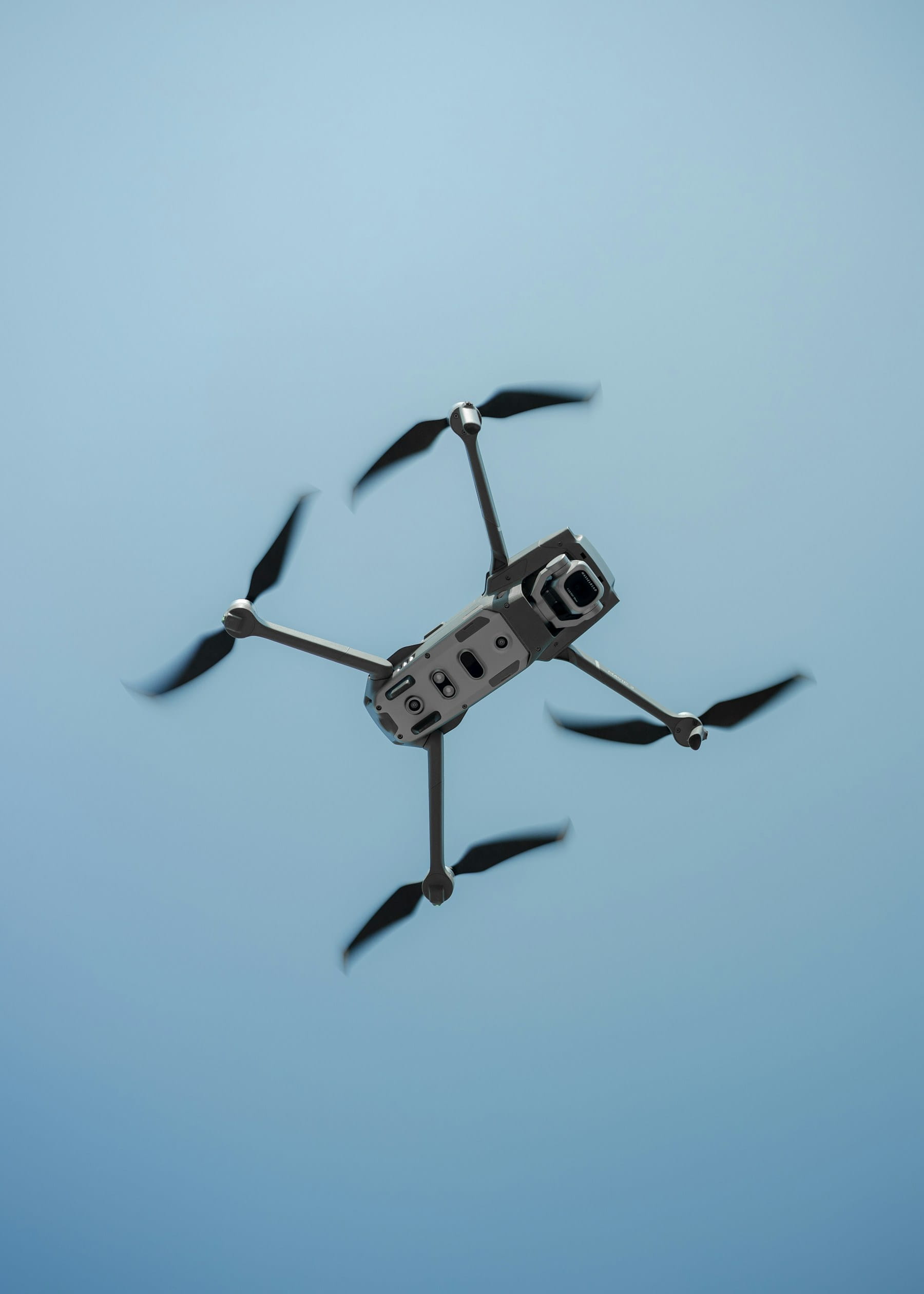What are Ground Control Points?
Ground control points (GCPs) are precisely surveyed physical markers placed on the ground with known coordinates (X, Y, Z) that appear in aerial imagery and serve as reference points for georeferencing drone data to real-world coordinate systems. These markers bridge the gap between aerial photographs and established surveying standards, transforming approximate drone GPS positioning into survey-grade accuracy required for professional construction, agricultural, and environmental applications.
Ground control points (GCPs) serve as the foundation for accurate drone surveying and mapping operations. These precisely surveyed reference points on the ground create the bridge between your aerial imagery and real-world coordinates. Without them, even the most sophisticated drone equipment can produce data that's off by several meters.
Professional drone operators across industries—from construction to agriculture to environmental monitoring—rely on ground control points to achieve survey-grade accuracy in their mapping projects. The difference between amateur aerial photography and professional-grade surveying often comes down to proper GCP implementation.
Table of contents
- What are ground control points
- Why ground control points matter
- Types of ground control points
- Planning your GCP layout
- GCP placement strategies
- Equipment needed for GCP work
- Setting up ground control points
- Surveying ground control points
- Processing data with ground control points
- Common ground control point mistakes
- Quality control and validation
- Cost considerations
- Frequently asked questions
- Implementation considerations
- In summary
What are ground control points
Ground control points are physical markers placed on the ground with known, precisely surveyed coordinates. These markers appear in aerial photographs captured during drone flights and serve as reference points for georeferencing the imagery to real-world coordinate systems.
Each GCP consists of two main components: a visible target that can be easily identified in aerial imagery, and highly accurate coordinate data (X, Y, Z) collected through professional surveying methods. The target must be large enough to appear clearly in drone imagery while remaining distinguishable from surrounding features.
The coordinate data typically comes from GPS/GNSS surveying equipment that can achieve centimeter-level accuracy. This precision far exceeds the accuracy of consumer drone GPS systems, which usually have accuracy ranges of 3-5 meters under optimal conditions.
Ground control points act as anchor points during the photogrammetric processing phase. Software uses these known reference points to correct geometric distortions, eliminate drift errors, and align the aerial imagery with established coordinate systems such as UTM, State Plane, or local grid systems.
Why ground control points matter
Drone GPS systems alone cannot provide the accuracy required for professional surveying applications. Consumer and prosumer drones typically achieve positional accuracy of 3-5 meters horizontally and 5-10 meters vertically. This level of accuracy might suffice for general mapping or inspection work, but falls short of survey-grade requirements.
Construction projects often require accuracy within 2-5 centimeters. Land surveying applications demand similar precision levels. Agricultural monitoring benefits from consistent, repeatable positioning to track changes over time. Without ground control points, achieving these accuracy standards becomes impossible.
The accumulated error in drone positioning can create significant problems in photogrammetric processing. Small positioning errors compound across hundreds or thousands of images, resulting in what professionals call "drift" in the final map products. Ground control points eliminate this drift by providing fixed reference points throughout the survey area.
Survey-grade accuracy opens doors to applications that would otherwise be impossible with drone technology. Volumetric calculations for earthwork projects, precise boundary mapping, topographic surveys, and construction progress monitoring all depend on the accuracy that only ground control points can provide.
Types of ground control points
Temporary markers
Temporary GCP markers offer flexibility and cost-effectiveness for most drone surveying projects. Common temporary markers include painted plywood targets, vinyl ground targets, and specialized GCP panels.
Painted plywood squares measuring 24x24 inches work well for flights at 200-400 feet altitude. Targets should feature high contrast patterns—white backgrounds with black crosses or bright geometric shapes. Vinyl ground targets provide another option, weighted down with sandbags and optimized for photogrammetric software recognition.
Permanent markers
Permanent ground control points make sense for sites requiring regular drone surveys, eliminating setup time and providing consistency across multiple campaigns.
Concrete monuments with embedded metal discs represent the most durable option. Metal discs embedded in pavement work well in urban environments, painted with high-contrast patterns for aerial visibility.
Natural features as control points
Existing features like building corners, painted pavement markings, or distinctive landscape elements can serve as GCPs when properly surveyed. Painted markings on pavement work particularly well—parking lot striping or road centerlines serve dual purposes. These features must be surveyed to the same precision standards as traditional markers.
Planning your GCP layout
Effective GCP placement requires strategic planning before arriving at the survey site. The number and distribution of control points directly impacts the accuracy and reliability of your final map products. Insufficient or poorly distributed GCPs can compromise even the most carefully executed drone flights.
Survey area size influences GCP quantity requirements. Small sites covering 1-2 acres might require only 4-6 control points, while larger areas covering hundreds of acres could need dozens of GCPs. The relationship between area size and GCP count isn't linear—larger areas benefit from proportionally more control points to maintain accuracy across the entire survey zone.
Flight altitude affects GCP visibility and spacing requirements. Higher altitude flights cover more ground per image but reduce the apparent size of ground targets. Lower flights provide better GCP resolution but require closer spacing to ensure adequate coverage across the survey area.
The following table shows typical GCP spacing recommendations based on flight parameters:
| Flight Altitude | Ground Sample Distance | Recommended GCP Spacing | Minimum Target Size |
|---|---|---|---|
| 200 feet | 2 cm/pixel | 200-300 meters | 24x24 inches |
| 300 feet | 3 cm/pixel | 300-450 meters | 36x36 inches |
| 400 feet | 4 cm/pixel | 400-600 meters | 48x48 inches |
Project accuracy requirements also influence GCP planning decisions. Projects requiring centimeter-level accuracy need more control points and tighter spacing than those accepting decimeter-level results. Higher accuracy projects often benefit from additional check points—surveyed points not used in processing but reserved for accuracy validation.
According to DroneDeploy's GCP best practices, for non-RTK/PPK drones, you should use 1 GCP for every 60 drone images, while RTK/PPK enabled drones require 1 GCP for every 200 images.
GCP placement strategies
Strategic placement of ground control points follows several key principles that maximize their effectiveness in photogrammetric processing. Proper distribution ensures that control points provide geometric strength to the bundle adjustment calculations that align aerial imagery.
Perimeter placement
Control points should be distributed around the perimeter of your survey area. This boundary coverage prevents extrapolation errors that occur when processing software must extend calculations beyond the control point network. Interior points alone cannot provide the geometric constraint needed for accurate edge processing.
Corner placement proves particularly valuable. GCPs located at or near the corners of rectangular survey areas provide strong geometric control for the entire project. These corner points help prevent the "bowling" effect where processed maps curve upward or downward at the edges due to insufficient boundary control.
Edge spacing should remain relatively consistent around the survey perimeter. Avoid clustering multiple control points in one area while leaving large gaps along other boundaries. Even distribution provides more reliable geometric control than concentrated placement.
Interior coverage
Interior control points provide additional geometric strength and help detect processing errors. These points should be distributed throughout the central portion of your survey area rather than clustered in one location.
The number of interior GCPs depends on survey area size and accuracy requirements. Small projects might include 1-2 interior points, while large surveys could require dozens. Interior points become increasingly important as survey areas exceed 100 acres.
Interior placement should consider terrain variation and accessibility. Points located on different elevation levels help strengthen the vertical accuracy of your mapping results. But don't place interior GCPs in locations that create safety hazards or access difficulties for your survey crew.
Elevation distribution
Projects covering significant elevation changes benefit from GCP placement at varying heights. Control points distributed across the full elevation range of your survey area provide better vertical accuracy than points clustered at similar elevations.
Valley bottom and ridge top placement works well for topographically complex sites. This elevation distribution helps the photogrammetric software better model terrain variations throughout the survey area.
Avoid placing all GCPs at easily accessible locations if those areas don't represent the full elevation range of your project. The extra effort required to place control points at challenging elevations often pays off in improved vertical accuracy results.
Equipment needed for GCP work
Ground control point operations require specialized equipment beyond your standard drone surveying kit. Professional GCP work demands survey-grade positioning equipment and properly designed targets that remain visible and accurate throughout the surveying process.
GNSS survey equipment
High-precision GPS/GNSS equipment forms the backbone of professional GCP surveying. Survey-grade GNSS receivers can achieve centimeter-level accuracy through various correction methods including Real-Time Kinematic (RTK) positioning and post-processed kinematic (PPK) techniques.
RTK-enabled GNSS systems provide real-time centimeter accuracy when operating within range of a base station or correction service. These systems require either a dedicated base station set up at a known point or subscription access to correction networks like those provided by regional RTK services.
PPK systems collect raw GNSS data during fieldwork and achieve high accuracy through post-processing techniques. While PPK doesn't provide real-time accuracy feedback, it offers greater flexibility in challenging environments where RTK signals might be interrupted.
Survey-grade GNSS equipment typically costs $15,000-50,000 for complete systems. However, rental options and newer consumer-grade RTK systems have made precision positioning more accessible to drone operators who don't require full survey-grade capabilities. Emlid RTK receivers provide more affordable options with over 20,000 users worldwide relying on their systems for construction sites, drone surveys, agriculture, and geophysics applications.
GCP targets and markers
Proper target design ensures visibility in aerial imagery while providing precise centering references. Commercial GCP targets come in various materials—rigid plastic or aluminum for durability, fabric for portability. Target patterns feature high-contrast geometric designs including crosses, circles with center points, and checkerboard patterns. Custom homemade targets using marine plywood and outdoor paint provide cost-effective alternatives for regular operations.
Field accessories
Essential accessories include weighted sandbags for securing targets, survey nails or stakes for anchoring, measuring tools for verification, and levels for flat placement. Weather protection equipment and documentation tools (cameras, field notebooks) help record GCP locations and maintain equipment performance during extended fieldwork.
Setting up ground control points
Field installation of ground control points requires attention to detail and systematic procedures to ensure optimal results. Proper setup techniques directly impact the accuracy and reliability of your final mapping products.
Site preparation
Ground preparation affects target visibility and survey accuracy. Clear vegetation, debris, rocks, and sticks from a 4x4 foot area around each control point. Avoid locations where water accumulates or morning dew creates reflective surfaces. Weather considerations significantly impact GCP effectiveness.
Target placement techniques
Center targets precisely using plumb bobs or laser pointers, especially on sloped surfaces. Orient targets consistently throughout your survey area for automated recognition. Secure targets against wind and weather—any shifting between survey and flight operations introduces processing errors.
Documentation procedures
Record GCP identifier, coordinates, target type, and special conditions for each location. Photograph targets from multiple angles with reference objects for scale. Create sketches or GPS waypoint logs to help flight crews locate control points during aerial operations.
Surveying ground control points
Precise surveying of ground control points requires professional techniques and equipment to achieve the accuracy levels needed for survey-grade mapping. The quality of GCP coordinates directly impacts the accuracy of all subsequent mapping products.
Survey procedures
Position GNSS antennas directly over GCP centers using tripods with optical plumb. RTK systems require 30-60 seconds observation per point, PPK systems need several minutes. Record antenna height measurements from ground point to antenna reference point to prevent vertical positioning errors.
Quality control measures
Repeat observations at control point subsets to verify consistency. Monitor position quality indicators including accuracy estimates, satellite geometry, and correction signal status. Maintain detailed logs of observation times, weather conditions, and equipment settings.
Coordinate systems and transformations
Select appropriate coordinate systems (UTM, State Plane, or local grids) before surveying. Verify GNSS configuration matches project requirements—mismatches cause many errors. Document all settings for processing and delivery.
Processing data with ground control points
Photogrammetric processing with ground control points involves several technical steps that transform aerial imagery and GCP coordinates into accurate mapping products. Understanding this process helps operators optimize their field procedures and troubleshoot processing issues.
Software considerations
Photogrammetric software (Pix4D, Agisoft Metashape) handles GCPs through bundle adjustment algorithms. Import GCP coordinates in CSV or shapefile formats and verify coordinate systems match. Pix4D's AutoGCPs uses machine learning for pixel-level accuracy identification.
Point identification and marking
Locate each GCP within aerial imagery across multiple overlapping images. Mark locations with sub-pixel precision using zoom tools—small errors accumulate. Verify each GCP appears in 5-10 overlapping images for geometric strength. Flag unclear or obscured points for exclusion.
Processing workflows
Process all GCPs initially and review residual error reports. Investigate outliers indicating surveying or identification errors. Use iterative processing to exclude problematic points. Generate accuracy assessments using independent check points for unbiased validation.
Common ground control point mistakes
Ground control point errors can compromise even well-executed drone surveys. Understanding common mistakes helps operators develop procedures that avoid these pitfalls and achieve consistent survey-grade results.
Planning and placement errors
Insufficient GCP coverage and poor geometric distribution cause frequent problems. Operators underestimate required control points or cluster them in accessible locations. Ignoring elevation changes leads to vertical accuracy issues—distribute GCPs across full elevation ranges.
Surveying and setup mistakes
Imprecise centering, inadequate observation times, and incorrect antenna heights introduce systematic errors. Brief RTK observations may achieve lock but lack survey-grade accuracy. Antenna height errors create consistent vertical positioning problems.
Processing and identification errors
Incorrect GCP identification causes most processing problems. Coordinate system mismatches shift entire maps significantly. Using poor quality control points for validation provides false confidence.
Quality control and validation
Robust quality control procedures ensure that ground control point operations meet professional standards and provide reliable accuracy for drone mapping projects. Systematic QC approaches help identify problems early when corrections remain feasible.
Field quality control
Implement redundant observations for critical GCPs. Use check shots at known coordinates to verify equipment calibration. Document field conditions including weather, satellite visibility, and signal performance.
Processing quality control
Analyze residual error reports to identify excessive differences between known and derived coordinates. Examine error patterns suggesting systematic problems. Compare accuracy results between GCP subsets—excluding problematic points can improve overall accuracy.
Independent validation
Reserve surveyed points as independent check points for unbiased accuracy assessment. Compare final products with existing survey data or GPS measurements. The ASPRS Positional Accuracy Standards Edition 2, Version 2 (2024) provides comprehensive guidance including UAS-specific addenda.
Cost considerations
Ground control point operations involve various cost factors that influence project budgets and profitability for commercial drone operators. Understanding these costs helps with accurate project bidding and resource allocation decisions.
Equipment costs
Survey-grade GNSS equipment represents the largest investment at $15,000-50,000, though rental options exist. Commercial GCP targets cost $50-200 each, with accessories adding several hundred dollars. Photogrammetric software licenses range from $3,000-15,000 annually.
Labor and time costs
GCP fieldwork requires skilled personnel capable of operating survey equipment and following precision procedures. Survey crew rates typically exceed general field technician costs due to specialized training and equipment requirements.
The following table shows typical time requirements for various GCP activities:
| Activity | Time per GCP | Crew Size | Notes |
|---|---|---|---|
| Target setup | 5-10 minutes | 1 person | Varies with terrain |
| GNSS surveying | 2-5 minutes | 1 person | Depends on method |
| Documentation | 2-3 minutes | 1 person | Photos and notes |
| Target removal | 3-5 minutes | 1 person | Cleanup and storage |
Project planning and reconnaissance time adds overhead costs that must be distributed across GCP operations. Site visits, coordinate system research, and equipment preparation can require several hours for complex projects.
Accuracy vs cost tradeoffs
Higher accuracy requirements demand more GCPs, longer survey times, and expensive equipment. RTK-enabled drones reduce GCP requirements but require higher upfront costs. Evaluate true accuracy needs for each project—not all applications require maximum precision.
Frequently asked questions
How many ground control points do I need for my drone survey?
The number of GCPs depends on survey area size, accuracy requirements, and whether you're using RTK/PPK positioning. For non-RTK drones, plan for approximately 1 GCP per 60 images, with a minimum of 5 GCPs (one near each corner and one in the center). RTK-enabled drones need fewer GCPs—approximately 1 per 200 images—though 4-5 GCPs still provide valuable validation. Larger surveys covering hundreds of acres may need dozens of control points for optimal accuracy.
Can I use natural features as ground control points?
Yes, natural features like building corners, painted pavement markings, or distinctive landscape elements can serve as GCPs if they meet visibility and precision requirements. The features must appear clearly in aerial imagery and can be precisely located during surveying. Painted pavement markings work particularly well, but sharp building corners can be difficult to identify precisely in aerial photographs. Always survey natural features to the same precision standards as traditional GCP targets.
Do I still need GCPs if my drone has RTK?
Yes, though RTK drones significantly reduce the number of GCPs required. RTK positioning provides centimeter-level accuracy for image geotagging but doesn't eliminate the need for ground control entirely. Even with RTK, 4-5 GCPs serve as validation points to verify system performance and provide backup references. For critical accuracy applications or projects requiring professional surveying deliverables, GCPs remain essential for quality assurance regardless of drone positioning capabilities.
What accuracy can I expect with properly placed GCPs?
With proper GCP procedures, drone mapping can achieve horizontal accuracy of 1-3 cm and vertical accuracy of 2-5 cm, meeting ASPRS survey-grade standards for most applications. Actual accuracy depends on several factors including GCP placement quality, number of control points, flight parameters, and processing techniques. Agricultural applications might accept lower accuracy while construction projects typically demand centimeter-level precision. Always validate accuracy using independent check points not used in processing.
Implementation considerations
Starting with ground control points requires careful evaluation of your current drone operations and target accuracy requirements. Assess which projects truly need survey-grade accuracy versus those that can operate with standard GPS positioning. Many operators begin by implementing GCPs for their most demanding clients or applications, then expand GCP usage as they build expertise and equipment inventory.
Equipment acquisition represents the most significant initial investment. Consider renting survey-grade GNSS equipment for your first few GCP projects to understand workflow requirements before committing to equipment purchases. Some operators partner with established surveying companies to access equipment and expertise during their learning phase. As project volume increases, equipment ownership becomes more cost-effective than rental or partnership arrangements.
Training your team in proper GCP procedures prevents costly mistakes and ensures consistent results. Survey equipment operation requires technical knowledge beyond standard drone piloting skills. Many drone equipment management systems now include GCP tracking features that help operators systematically document control point locations, coordinates, and quality metrics across multiple projects.
Start with simpler projects covering smaller areas before advancing to complex surveys requiring extensive GCP networks. Each project builds operational experience and helps identify workflow improvements. Document lessons learned and continuously refine your procedures based on processing results and client feedback.
In summary
Ground control points transform drone mapping from approximate aerial photography to precision surveying tool capable of meeting professional accuracy standards. The investment in GCP procedures, equipment, and training pays dividends through expanded service capabilities, improved accuracy results, and increased client confidence in your deliverables.
Success with GCPs requires attention to detail throughout the entire workflow—from initial planning and target placement through surveying, flight operations, and final processing. Small errors at any stage can compromise final accuracy, making systematic procedures and quality control essential for professional operations.
Technology continues advancing with RTK/PPK integration, automated target detection, and improved processing algorithms. These developments reduce but don't eliminate the need for properly implemented ground control procedures. Professional drone operations will continue relying on GCPs as the proven method for achieving and validating survey-grade accuracy across construction, agriculture, environmental monitoring, and other demanding applications.
Ready to elevate your drone surveying operations?
DroneBundle provides comprehensive flight planning and operations management tools specifically designed for professional surveying workflows. The platform streamlines your entire GCP workflow from mission planning through data delivery, with integrated tools for managing control point locations, coordinating surveying activities, and maintaining quality control throughout complex mapping projects.
Track GCP coordinates systematically, document field conditions, coordinate survey crew activities, and maintain detailed project records all within a single unified platform. DroneBundle helps professional operators maintain the rigorous documentation and systematic procedures that survey-grade accuracy demands.
Start your free trial today — no credit card required.
Or book a demo to see how DroneBundle streamlines surveying workflows with integrated operations management and detailed flight reporting.
